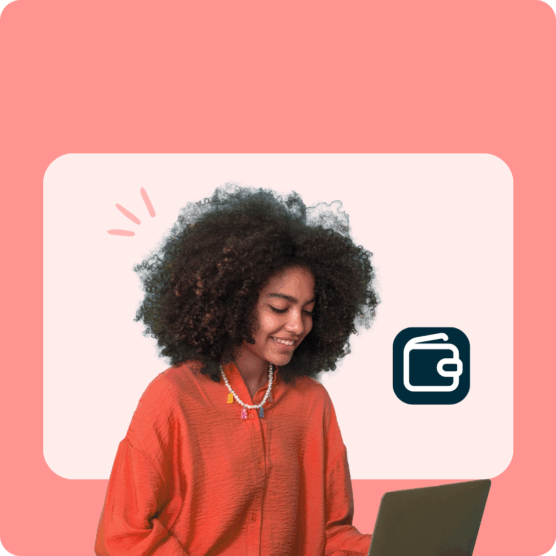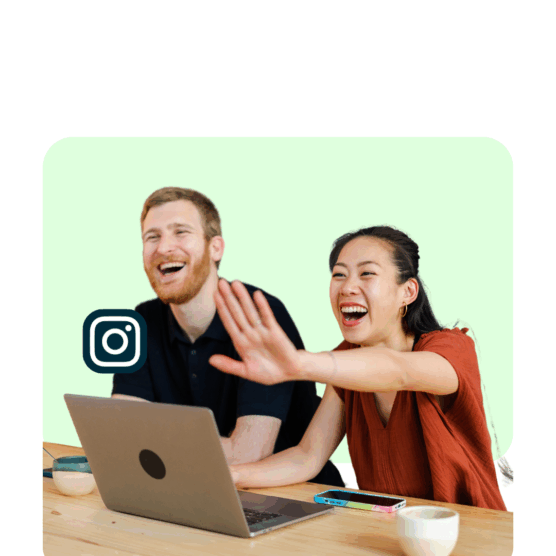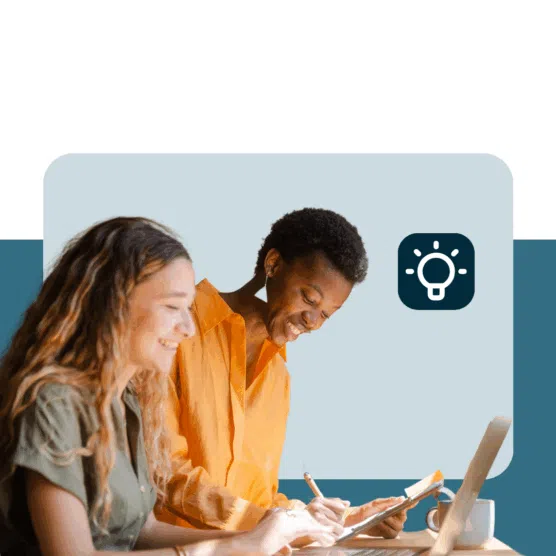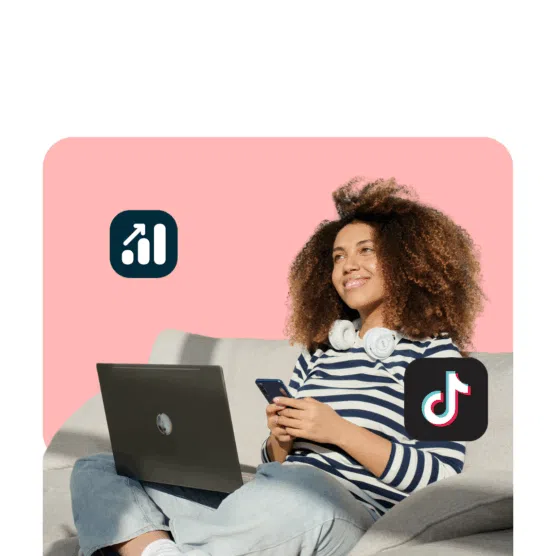Ever feel like crafting AI art prompts requires secrets and magic? How are all of these creative professionals creating stunning, mind-blowing visuals in tools like Midjourney and DALL-E when all of your prompts fall flat?
The reality is that creating cool AI art prompts isn’t as complicated as it might seem. With the right knowledge, you can use simple keywords and formulas to generate high-quality AI art.
In this article, we’ll break down how to write effective AI art prompts from start to finish. We’ll also offer up examples and templates that you can use to jumpstart your own AI art projects.
Looking to add generative AI to your social media flow? Check out OwlyWriter AI, Hootsuite’s very-own AI caption generator.
How do AI art generators work?
Before we get into the nitty-gritty of AI art prompt tips, it’s important to understand how AI art generators work. First off, generative AI applications are robots, not humans. That might seem obvious, but it’s important to remember that these generators don’t understand the world like you do.
AI art generators don’t know what an owl looks like in the wild. They don’t know what a sunset looks like in a physical sense. They can only understand details about features, patterns, and relationships within the datasets they’ve been trained on.
Prompting for a “beautiful face” is not very helpful. It is more effective to prompt for specific features such as symmetry, big lips, and green eyes. Even if the bot doesn’t understand beauty, it can recognize the features you describe as beautiful and generate something relatively accurate.
To get the best results from your AI art generator prompt, you’ll need to give clear and detailed instructions. An effective AI art prompt should include specific descriptions, shapes, colors, textures, patterns, and artistic styles. This allows the neural networks used by the generator to create the best possible visuals.
How to write an AI art prompt
Now that you know how AI art generators work, it’s time to start crafting your prompts. Here are a few tips and tricks you can use when writing good AI art prompts.
1. Describe the content of your image
When writing an AI art prompt, you’ll want to be as descriptive as possible about the content of your image. Is it a drawing, sketch, or 3D rendering? Should it look like a photograph, or is something more illustrated?
Try starting your prompt like this:
- A photograph of…
- A 3D rendering of…
- A sketch of…
- An illustration of…
2. Describe the subject
All AI art prompts should include a description of the subject you want to create. This could be anything from a person, animal, or object to an abstract concept or emotion. Get as specific with your descriptions as possible so the AI generator knows what to look for in its datasets.
For example:
- An illustration of an owl…
- A photograph of a president…
- A 3D rendering of a chair…
Here’s a Midjourney AI art prompt for: “An illustration of an owl.”

3. Add relevant details
Next, add detail to your prompt by including relevant information about the elements of your image. This could include anything from colors, color palettes, shapes, sizes, and textures.
If you want to generate an image of a bear, don’t just say “bear.” Explain what kind of bear it is (brown and black, grizzly or polar), its surroundings (a forest or mountain range), and any other interesting details.
For example:
- An illustration of a red owl with bright blue eyes…
- A photograph of a president wearing a navy suit…
- A 3D rendering of a chair that’s round and yellow…
Here’s an AI art prompt example from Midjourney for: “An illustration of a red owl with bright blue eyes.”

4. Describe the form and style
You’ll also want to provide details about the form and style of your AI art. This is especially important if you’re looking for a specific visual effect. For example, you might include keywords such as “abstract,” “minimalist,” or “surreal” to convey a certain artistic feel.
Try this:
- An illustration of a red owl with bright blue eyes in the style of abstract expressionism…
- A photograph of a president wearing a navy suit with a minimalist look…
- A 3D rendering of a chair that’s round and yellow in the style of cubism…
You can also use a specific artist’s name here to mimic their style. For instance, say, “Like Salvador Dali.” Or, mention an artist’s specific artwork, like “Like Andy Warhol’s Shot Marilyns painting.”
Here is the Midjourney result for “An illustration of a red owl with bright blue eyes in the style of abstract expressionism.”

5. Define the composition
Finally, you can use keywords to define the composition of your image. This includes things like resolution, lighting style, aspect ratio, and camera view.
For example:
- An illustration of a red owl with bright blue eyes in the style of abstract expressionism with volumetric lighting.
- A photograph of a president wearing a navy suit with a minimalist look taken from an aerial viewpoint.
- A 3D rendering of a chair that’s round and yellow in the style of cubism with a resolution of 4096 x 2160.
Here is the Midjourney result for: “An illustration of a red owl with bright blue eyes in the style of abstract expressionism with volumetric lighting.”

With these examples, you can see how each image changes as the prompt evolves.
Additional AI art prompt tips to consider
Here are a few additional tips to keep in mind when generating AI art from prompts.
- Use keywords that the AI generator can understand. Don’t use overly complicated or uncommon words, as the AI’s neural networks won’t be able to recognize them.
- Keep your prompts short and sweet. While having at least 3 to 7 words in an AI art prompt is recommended, don’t overwhelm the system by being overly descriptive.
- Adjectives are your best friend! Use multiple adjectives to describe your art’s subject, style, and composition.
- Avoid conflicting terms that have opposite meanings. For example, using both “realistic” and “abstract” to describe the style of your AI art will likely confuse the generator.
- Use other AI copywriting tools, like ChatGPT, as AI art prompt generators. Why not let the robots do the work?
- Research the specific tool you’re using to find out what keywords it can recognize. Tools like Midjourney, DALL-E, and Bing Image Creator all work a little differently. We’ll go into their characteristics later on in this article.
50 AI art prompt examples to try
Need AI art prompt ideas? Here are some of the best prompts for AI art generator tools you can use today.
- A 3D rendering of a tree with bright yellow leaves and an abstract style.
- An illustration of a mountain in the style of Impressionism with a wide aspect ratio.
- A photograph of a steampunk alien taken from a low-angle viewpoint.
- A sketch of a raccoon in bright colors and minimalist composition.
- A 3D rendering of a spaceship in the style of cubism with high resolution.
- An old woman washing her clothes in the winter in the style of Renaissance art with a narrow aspect ratio.
- A 3D rendering of a star with pastel colors and a whimsical look.
- A picture of a butterfly riding a motorcycle in vaporware style with a wide-angle view.
- A photograph of three friends playing music on the street in the style of Pop Art with a medium aspect ratio.
- A group of pug dogs at a rave in a Renaissance style.
- A sketch of a mysterious castle in the style of Gothic art with an aerial viewpoint.
- A 3D rendering of an office desk with a futuristic look and bokeh.
- Cubist painting of a backlit train station with bright colors and realistic textures.
- An illustration of a woman laying on a bed in a dynamic pose dreaming in black-and-white.
- Impressionist oil painting of a beach at sunset with a narrow aspect ratio.
- A photograph of a city skyline in the style of Edward Hopper taken from an aerial viewpoint.
- A 3D rendering of a cat sitting on a windowsill in minimalist style with high resolution.
- Graffiti-style painting of a city street with an urban look and textured surfaces.
- A sketch of a pirate ship in black-and-white with realistic textures and low resolution.
- A chalk drawing of a family picnic being attacked by ants in Central Park with a surrealist style.
- A watercolor painting of a coffee shop with surreal elements in vibrant colors.
- An oil painting of a rainbow over a rural abandoned town with classic style.
- A 3D rendering of a spaceship taking off into space with a cyberpunk look and wide aspect ratio.
- A futuristic space station is shown in jewel tones, ultra photoreal, and cinematic lighting.
- A creative composition of a frog wearing a crown sitting on a log in a Japanese anime style.
- Outside of a 1960s diner in monochromatic colors and vintage feel.
- A retro-style robot playing a futuristic video game in neon tones with medium resolution.
- An image of a dark and mysterious castle with bats flying around it in an American Gothic style.
- An animated GIF of a robot dancing to 80s music with a cartoon look.
- An illustration of a family photo taken on the beach in the style of Ansel Adams.
- An abstract painting of a sunflower in the middle of a desert with bright colors and low resolution.
- A beachfront bar at a holiday resort at nighttime with purple and pink tones in a pop art style.
- A 3D rendering of a garden blooming with flowers under the moonlight in a low-angle view.
- A fantasy painting of a castle sitting on top of a craggy peak with a cinematic tone.
- A candid photograph of a woman standing at the edge of a cliff overlooking the ocean in an art nouveau style.
- A 3D rendering of a cityscape at night with neon lights and an abstract style.
- An illustration of a spaceship flying through the stars in the style of Van Gogh with a full depth of field.
- A sketch of two cats sitting on a sofa watching TV while eating spaghetti.
- Two monsters playing chess in the style of cubism with bright colors and low resolution.
- A picture of a person walking alone through a forest in the style of Romanticism taken from an aerial viewpoint.
- A low-detail oil painting of a thunderstorm over a cityscape with dark tones and a backlit resolution.
- A 3D rendering of a futuristic train station in the style of Art Nouveau with volumetric lighting.
- An illustration of a river winding through a meadow in the style of Impressionism with a thick black outline.
- A photograph of a person sitting on a bench facing the sunset in black and white.
- A minimalist painting of a city skyline in bright colors and high resolution.
- A sketch of two robots talking to each other with a surreal look and narrow aspect ratio.
- A Dadaist collage of a post-apocalyptic world in neon tones and 4K resolution.
- A rococo painting of a garden with abstract elements and high resolution.
- A photograph of an old man walking in the rain making eye contact with the viewer in a mid-shot view.
- A watercolor painting of a flock of birds flying over a river at sunset with realistic textures.
OwlyWriter AI instantly generates captions and content ideas for every social media network. It’s seriously easy.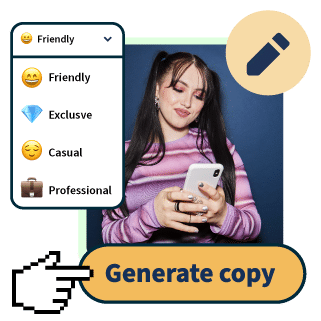
AI art tool comparisons
Finding the right AI art generator for your project can be tricky. To help your process, let’s compare Midjourney, DALL-E, and Bing Image Creator. This will help you decide which is best suited to your needs.
Midjourney

Midjourney is an AI tool that creates pictures from words. Users can change the image size, shape, view, and more. Midjourney is known for its photo-realism images, as well as hyperrealistic images.
Midjourney also operates in a Discord chatroom. You can see how others create AI art prompts and get inspired by their work.

Keep in mind your first 25 images on Midjourney are free. But after that, basic plans start at $10 per month.
Some tips for using Midjourney:
- Words at the start of the prompt hold more weight than words at the end.
- Midjourney particularly likes artist references, so feel free to include them in your prompt.
- Some of the most effective Midjourney keywords include: Fashion photography, Pulitzer Prize-winning photography, Bokeh, Volumetric Lighting, Golden Hour, Soft natural lighting, and Film gain. Find more here.
Here’s a Midjourney example for: “A Dadaist collage of a post-apocalyptic world in neon tones and volumetric lighting.”

DALL-E

DALL-E is a great AI art generator trained on the concept of “imagination.” It creates surreal dreamscapes and can interpret creative concepts as well as abstract ideas. The images DALL-E produces often have a unique, otherworldly feel to them.
Unlike Midjourney, DALL-E focuses more on creative prompts and less on photorealistic images. It also follows word prompts closely and has an intuitive interface, giving new users a relatively low learning curve. DALL-E gives you 50 free credits upfront and then 15 more each month you use the service. But, those that use the tool beyond their free prompt limit will need to pay $15 for every additional 115 prompts.
Some tips for using DALL-E:
- DALL-E works best with specified art styles. Try styles like digital art, steampunk art, cyberpunk art, or vapourware art.
- As a faithful prompt follower, DALL-E enjoys descriptive prompts. Add adjectives like dark, light, epic, sad, or happy to improve your results.
- DALL-E often leaves the background white if you don’t specify a color. To add a backdrop, include keywords like “in Paris” or “in the woods at night” to your prompt.
We used the same AI art prompt from our Midjourney test, ”A Dadaist collage of a post-apocalyptic world in neon tones and volumetric lighting,” in DALL-E.
Here’s what we got:

Different, right?
Bing Image Creator

Whereas Midjourney focuses on photorealism, and DALL-E emphasizes creative concepts, the Bing Image Creator specializes in vibrance and detail.
Bing Image Creator struggles a bit with facial features, fine detail, and consistency of style. But it’s free to use, so you don’t have to feel bad if you don’t like your results.
Some tips for using Bing Image Creator:
- Bing Image Creator recommends formatting your prompts like this: Adjective + Noun + Verb + Style.
- Adding creative details like locations, artistic styles, and camera views can help improve your image quality.
- Get creative and have fun!
Here’s the result for “A Dadaist collage of a post-apocalyptic world in neon tones and volumetric lighting” from Bing Image Creator.

FAQs about AI art prompts
Is there a free AI art generator?
There are many free AI art generators, such as Nightcafe, Starry AI, Bing Image Creator, and Craiyon. Tools like Midjourney and DALL-E also offer free credits for accessing their services.
What is a good prompt for AI art?
The best AI art prompts vary depending on the tool and the desired outcome. In general, it’s best to use a combination of descriptive adjectives and specific nouns when writing your prompt. You can also use other artificial intelligence tools like ChatGPT to generate prompts.
How can I create my own AI art?
To create your own AI art, use an AI art generator like Midjourney, DALL-E, or Bing Image Creator. Then, use the tool’s interface to craft your prompts and generate images.
Save time managing your social media presence with Hootsuite. From a single dashboard you can publish and schedule posts, find relevant conversions, engage the audience, measure results, and more. Try it free today.



